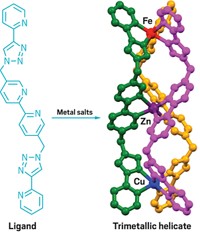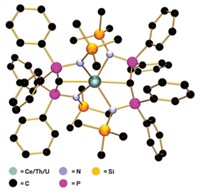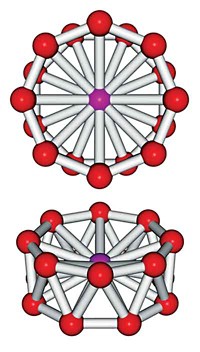Advertisement
Grab your lab coat. Let's get started
Welcome!
Welcome!
Create an account below to get 6 C&EN articles per month, receive newsletters and more - all free.
It seems this is your first time logging in online. Please enter the following information to continue.
As an ACS member you automatically get access to this site. All we need is few more details to create your reading experience.
Not you? Sign in with a different account.
Not you? Sign in with a different account.
ERROR 1
ERROR 1
ERROR 2
ERROR 2
ERROR 2
ERROR 2
ERROR 2
Password and Confirm password must match.
If you have an ACS member number, please enter it here so we can link this account to your membership. (optional)
ERROR 2
ACS values your privacy. By submitting your information, you are gaining access to C&EN and subscribing to our weekly newsletter. We use the information you provide to make your reading experience better, and we will never sell your data to third party members.
Synthesis
Hyperhalogens Amp Up Electronegativity
A step up in complexity from “superhalogens,” gold-boron clusters now have the highest electron affinities observed
by Elizabeth K. Wilson
October 18, 2010
| A version of this story appeared in
Volume 88, Issue 42
Chemists have synthesized a class of gold-and-boron-based molecules that have ultrahigh electronegativities. If the molecules can be tamed, they could possibly be used as superoxidizing agents (Angew. Chem. Int. Ed., DOI: 10.1002/anie.201002212). Using both theoretical methods and gas-phase photoelectron spectroscopy experiments, Puru Jena of Virginia Commonwealth University and colleagues studied the properties of Aun (BO2) clusters, which they call hyperhalogens. These molecules are a step up in complexity from superhalogens, which are highly electronegative molecules with electron affinities even greater than those of elements like fluorine. Superhalogens are typically made from a central metal atom surrounded by halogen or oxygen atoms; they include MnO4 – and PtF6 –, but also species such as ClO4 – and BO2 –. Jena and coworkers found that surrounding a gold atom with two BO2 – superhalogen groups produced a species that has an electron affinity of 5.7 eV—almost 2.5 eV larger than that of AuF2. The researchers hypothesize that even more powerful hyperhalogens could be created by tailoring the central metal atom and surrounding superhalogen building blocks. They also suggest that if the central atom is a transition-metal atom, hyperhalogen clusters could have magnetic moments, forming a rare ferromagnetic insulator if the moments align in parallel.





Join the conversation
Contact the reporter
Submit a Letter to the Editor for publication
Engage with us on Twitter